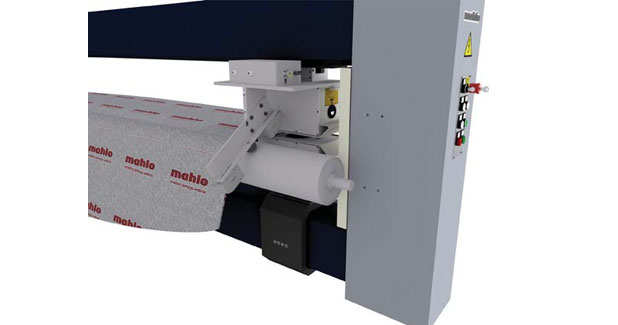
Thickness measurement with Mahlo
Whether extremely thin transparency film in the foodstuff sector, tough floor coverings or cosmetic tissues, coated industrial products are everywhere. The bandwidth ranges from a simple material coat on a carrier fabric to complex multi-layer materials.
Mahlo has developed a special sensor with the Calipro DMS, which acts largely independent of the material finish.
Whether extremely thin transparency film in the foodstuff sector, tough floor coverings or cosmetic tissues, coated industrial products are everywhere. The bandwidth ranges from a simple material coat on a carrier fabric to complex multi-layer materials. However, there is one thing they all have in common, in spite of their diversity: An optimal product of which the customer is satisfied is only created when all coats have the precisely right application quantity and the required parameters are observed in the end. A major challenge for any manufacturer.
The coating thickness is an important testing factor to this end. Although measuring by hand by way of random checks is possible, it is usually rather unreliable. The test results may already vary when the angle or pressure of the measuring instrument changes only minutely. Automatic measuring systems on the running product web, as they are produced by the machine builder Mahlo GmbH + Co. KG, are much more reliable. Different sensors are available in connection with the traversing quality measuring system Qualiscan QMS, measuring material thickness during production. The methods used here are quite diverse. The coating thickness of almost all materials can be calculated with beta, infrared or X-rays, which penetrate the product or are reflected by it. Mahlo has developed a process for thin film utilising white light interference. If white light is reflected by thin layers, this reflection appears coloured like a rainbow. The light is partially reflected, both on the upper and lower interface. The overlaid reflections interfere. This interference is related to the coating thickness and can be measured with a spectrometer.
Solutions for special scenarios
All sensor versions deliver excellent results for their area of application. However, there are situations where they reach their limits. For example, when the material surface is structured, coarse, very smooth or shiny. Laser triangulation is not suitable either with multi-colour, transparent or opaque materials. For these special scenarios, Mahlo has developed a special sensor with the Calipro DMS, which acts largely independently of the material finish. The combination of eddy current sensor and shading sensor makes the measurement insensitive against properties, colour, transparency, opacity and temperature variations.
Principle of operation
A good example for the use of the Calipro DMS is hygiene fleece, used for moist cleaning tissue. The fleece material, having a structured surface, is coated here with one or several soapy additives. For the final product to fulfill the desired functions, the layers must have the right thickness, of course. When measuring the nonwoven material, the product runs under the sensor with a 60° arc of contact over a reference roller. At the same time, the light of an LED is directed as uniform, parallel light beam onto the fleece web. Depending on the material thickness, a certain area is thus shaded at the detector. The transition between the bright and dark area at the receiver is detected as measuring value. An integrated eddy current sensor constantly measures the current roller position, since minute value deviations occur due to their natural fluctuating movements. The material thickness is finally calculated from the difference of the measured value between eddy current sensor and shading sensor. Further measurements are possible after each additional application in the production line if the values of the individual layers shall be determined. The Calipro DMS can thereby always be installed on a measuring frame or as standalone device.
If the manufacturer is able to check the thickness of the individual coats, he has already established the basis for his success. Only when the exact values are known can they also be correctly controlled thereby optimising the production processes.



